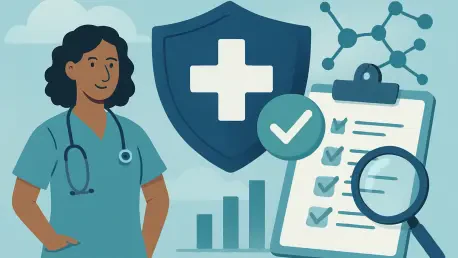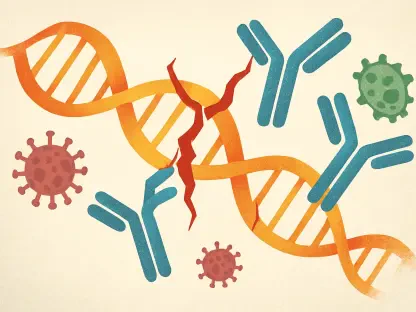In the intricate landscape of Australia’s healthcare system, where public and private sectors intersect, clinical networks stand as vital pillars in the pursuit of patient safety and quality care, ensuring that evidence-based practices are seamlessly integrated. These collaborative groups, made up of healthcare professionals, organizations, and stakeholders, are tasked with translating evidence-based practices (EBP) into tangible improvements in patient outcomes. Their work is not merely about adopting research but ensuring that it aligns with both immediate clinical needs and overarching systemic goals. The complexity of this dual role as agents of change and stewards of quality raises intriguing questions about the mechanisms behind their approach. What drives the integration of evidence into daily practice? How do internal and external factors shape their strategies for enhancing safety? Exploring these dynamics reveals a multifaceted framework where culture, leadership, resources, and technology converge to prioritize patient well-being in a constantly evolving healthcare environment.
Balancing Dual Responsibilities in Healthcare
Australian clinical networks operate within a unique framework, simultaneously acting as implementers of evidence for direct patient care and as guardians of broader healthcare standards. This dual responsibility requires a delicate balance, as the focus on immediate outcomes must harmonize with long-term policy objectives and ethical considerations. As agents, these networks actively apply research findings to improve clinical practices, ensuring that treatments and interventions are grounded in the latest scientific insights. As stewards, they uphold a commitment to systemic integrity, aligning their efforts with national guidelines and safety protocols. This intricate interplay often presents challenges, as the urgency of day-to-day care can sometimes conflict with strategic goals. Navigating this tension is central to their mission, requiring adaptability and a deep understanding of both clinical and administrative landscapes to maintain a steadfast focus on safety.
The impact of this dual role extends beyond mere implementation, shaping how clinical networks prioritize resources and address gaps in care. For instance, ensuring that evidence is not only accessible but also relevant to specific patient populations demands a nuanced approach to decision-making. This involves tailoring interventions to diverse clinical settings while adhering to overarching quality benchmarks. Such efforts highlight the complexity of their responsibilities, as they must continuously evaluate the effectiveness of evidence-based strategies in real-world scenarios. Moreover, the stewardship aspect compels networks to advocate for policies that support sustainable improvements, ensuring that safety remains a non-negotiable priority. By balancing these roles, clinical networks foster an environment where evidence serves as a cornerstone for both immediate action and long-term progress in healthcare quality.
Shaping Evidence Use Through Internal Factors
Within clinical networks, organizational culture emerges as a pivotal determinant in how evidence is adopted and applied to enhance safety. A culture that champions learning, innovation, and openness to change creates fertile ground for healthcare professionals to engage with the latest research. When staff members feel encouraged to question outdated practices and embrace new findings, the integration of EBP into routine care becomes seamless. This environment not only boosts morale but also ensures that patient safety is prioritized through informed decision-making. However, a culture resistant to change or skeptical of new data can stifle progress, creating barriers that hinder the application of critical evidence. Addressing such resistance requires deliberate efforts to foster trust and adaptability, ensuring that the pursuit of quality care remains uncompromised in dynamic clinical settings.
Leadership within these networks further amplifies the impact of internal dynamics on evidence use. Transformational leaders who actively promote EBP can inspire a workforce to prioritize safety through continuous improvement. By fostering open communication, providing access to resources, and modeling a commitment to research-driven practices, such leaders break down barriers to adoption. Their role in navigating resistance and aligning team efforts with safety goals cannot be overstated. Beyond mere advocacy, effective leadership involves strategic planning to integrate evidence into workflows, ensuring that it translates into measurable outcomes. This influence is particularly evident in how leaders allocate time for training and encourage collaboration, creating a ripple effect that embeds evidence as a core value. The synergy between culture and leadership thus forms a powerful internal engine driving clinical networks toward enhanced patient safety and care quality.
Navigating External Forces in Evidence Adoption
External factors, particularly funding and government policies, play a significant role in shaping how clinical networks leverage evidence for safety. In Australia’s blended healthcare system, economic support is crucial for enabling research and its practical application. Adequate funding ensures that networks can access cutting-edge studies, invest in necessary tools, and implement evidence without financial strain. Government policies that align research initiatives with operational needs further bolster this process, creating a supportive framework for innovation. When policies prioritize safety and quality, clinical networks gain the flexibility to focus on evidence-driven improvements rather than grappling with fiscal limitations. This external backing is essential for sustaining long-term progress, as it bridges the gap between theoretical insights and real-world impact in diverse healthcare settings.
Beyond financial and policy support, the broader healthcare environment also influences evidence adoption through regulatory expectations and public-private collaborations. Regulatory frameworks often set the tone for how evidence must be integrated into clinical practices, providing clear guidelines that networks must follow to ensure safety. Meanwhile, partnerships between public and private entities can facilitate resource sharing, expanding access to data and expertise that enhance EBP implementation. These external dynamics require clinical networks to remain agile, adapting to evolving standards while maintaining a steadfast commitment to patient well-being. The interplay of funding, policy, and collaboration underscores the importance of a cohesive external ecosystem that empowers networks to prioritize evidence. Without such support, even the most dedicated internal efforts risk falling short, highlighting the need for systemic alignment to achieve lasting improvements in healthcare quality.
Enhancing Capabilities with Education and Technology
Education stands as a cornerstone in empowering clinical networks to utilize evidence effectively for patient safety. Continuous professional development ensures that healthcare providers are equipped with the skills to interpret and apply research findings in their daily work. By embedding EBP into medical training and offering ongoing workshops, networks cultivate a workforce that remains adaptable in a rapidly changing field. This focus on lifelong learning addresses the gap between theoretical knowledge and practical application, enabling clinicians to make informed decisions that directly benefit patient outcomes. Furthermore, tailored educational programs can target specific challenges, such as understanding complex data or navigating new protocols, ensuring that evidence becomes a practical tool rather than an abstract concept. This commitment to skill-building is vital for maintaining high standards of care across diverse clinical environments.
Technology complements educational efforts by providing data-driven tools that enhance evidence-based decision-making within clinical networks. Advanced analytics and digital platforms offer insights that can refine treatment plans and improve safety protocols. However, the effectiveness of these tools hinges on the technological literacy of healthcare providers. Outdated curricula or limited training can undermine the potential of such innovations, leaving networks unable to fully capitalize on their benefits. Addressing this requires integrating digital education into professional development, ensuring that staff can confidently navigate modern systems. When technology and education align, clinical networks gain a powerful mechanism for translating evidence into action, from identifying at-risk patients to optimizing resource allocation. This synergy not only boosts efficiency but also reinforces a proactive approach to safety, positioning networks to meet the demands of an ever-evolving healthcare landscape.
Future Pathways for Strengthening Safety
Reflecting on the efforts of Australian clinical networks, it becomes evident that their dedication to evidence-based practices has laid a strong foundation for patient safety over time. Their ability to balance dual roles, nurture internal cultures, and adapt to external pressures demonstrates a resilient approach to healthcare quality. By fostering leadership and prioritizing education, these networks have consistently worked to bridge the gap between research and practice, ensuring that safety remains at the forefront of their mission.
Looking ahead, the focus should shift toward refining the frameworks that guide evidence use, building on past achievements to address emerging challenges. Developing more robust partnerships between public and private sectors could unlock additional resources, while targeted investments in technology training might further enhance capabilities. Encouraging greater stakeholder involvement in policy design could also ensure that future strategies remain relevant to real-world needs. These steps, grounded in the lessons of previous efforts, offer a clear path for clinical networks to sustain and elevate their impact on healthcare safety.









